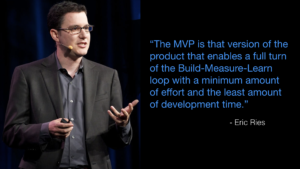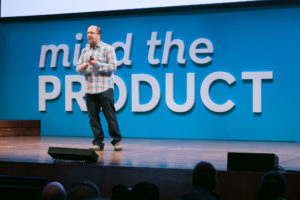Face to Face With the Customer. You can send out as many surveys or do as many focus groups as you want, but you’ll never understand the aggravation your user community is feeling until you’re sitting next to them while they struggle to use your software.
Sit with them. Don’t explain how to use the software. Watch them struggle. You’ll learn more in an hour by watching them then you will in days of focus groups and hundreds of surveys sent out.
I was fortunate enough to see Steve Blank speak once at a Tech Stars Founder’s Conference. He made a very clear point: the answers are not in the office, get out of the office. Go talk to customers. That’s where the answers are.




 There are at least two forces in product management: Agents of Chaos and Agents of the Epiphany. Agents of Chaos state emphatically what needs to be built for customers, without ever speaking to a customer. Agents of the Epiphany don’t know exactly what needs to be built but routinely watch and speak with customers.
There are at least two forces in product management: Agents of Chaos and Agents of the Epiphany. Agents of Chaos state emphatically what needs to be built for customers, without ever speaking to a customer. Agents of the Epiphany don’t know exactly what needs to be built but routinely watch and speak with customers.


 Here it is: provide clarity where there may not be any, and enable the team to consistently and predictably deliver value to the company.
Here it is: provide clarity where there may not be any, and enable the team to consistently and predictably deliver value to the company. Building a solid product, or even building a solid product team, takes time. If you’re responsible for a product and you don’t understand this, it’s going to be a difficult time for both you and the team.
Building a solid product, or even building a solid product team, takes time. If you’re responsible for a product and you don’t understand this, it’s going to be a difficult time for both you and the team. 
